Introduction and Package
Introduction
I saw the press release the other week for the Black GTX 460 from ECS and ever since then I've been a pain to them asking when I was going to get a chance to look at it. The moment I saw the card and that massive Arctic Cooling cooler that ECS had implemented, I knew it was going to be a beast. The question we ask now, is it beasty enough?
The GTX 460 has become one of the toughest video card markets for partners; the model is very popular, very overclockable and most partners are offering something that's outside the norm.
So with the bar set high already, let's look at the package before we have a closer look at the card, its clocks and performance.
The Package
Checking out the package, there's not much going on. We've got a simple driver disk, DVI to VGA connector, SLI connector, Dual Molex to 6-Pin PCI-E convertor along with an 8-Pin to 6-Pin PCI-E convertor which might come in handy for people who only have a single 6-Pin and 8-Pin PCI-E power connector on their power supply.
Card and Specifications
The Card
The stand-out aspect of the card is no doubt that massive TwinTurbo Pro Arctic Cooling cooler which is just huge in every way with it towering over the top of the card and hanging out to take up a third slot.
Apart from the cooler there's not a whole lot else to see with just two 6-Pin PCI-E power connectors, a single SLI connector and connectivity in the shape of two Dual-Link DVI ports and a single mini-HDMI one.
Something that must be said, though, is the fact that ECS thought about the cooler and chose to include an extra long SLI connector in the event you want to run two of these bad boys, assuming you've got the space between slots.
Specifications

Like every other GTX 460 we've seen to date, the ECS doesn't carry with it stock clocks. Instead they've chosen to bump the core from 675MHz to 765MHz and the memory from 3600MHz QDR to 3700MHz QDR.
It's not the biggest increase in speed we've seen to date, but more impressive than some which have only bumped the core up to 715MHz or 725MHz and chosen to leave the memory clock alone.
Test System Setup and 3DMark Vantage

We would like to thank the following companies for supplying and supporting us with our test system hardware and equipment: Intel, ASRock, Kingston, Mittoni, Noctua and Corsair.
Since we've made some changes to the testbed like power supply upgrade, moved to an SSD and a few other things including a whole mess of new benchmarks, we've had to scrap all our old results and start again.
Since this is the first card we've tested on the new setup, we really don't have anything to compare it against. So for that reason the time was taken to do some overclocking on the model to see what kind of OC this massive cooler could help us achieve.
What we ended up with was a 930MHz core, which in turn bumped our Shader clock to 1860MHz. As for the memory, we took that to 4200MHz QDR. All the results can be seen below in our GPU-Z screen shot.

Let's get started!
3DMark Vantage
Version and / or Patch Used: 1.0.1
Developer Homepage: http://www.futuremark.com
Product Homepage: http://www.futuremark.com/products/3dmarkvantage/
Buy It Here

3DMark Vantage is the new industry standard PC gaming performance benchmark from Futuremark, newly designed for Windows Vista and DirectX10. It includes two new graphics tests, two new CPU tests, several new feature tests, and support for the latest hardware.
3DMark Vantage is based on a completely new rendering engine, developed specifically to take full advantage of DirectX10, the new graphics API from Microsoft.

It comes as no surprise that we see a good boost in performance with the core at 930MHz. The GTX 460 continues to be a force in this mid range market.
Unigine Heaven Benchmark
Version and / or Patch Used: 2
Developer Homepage: http://www.unigine.com
Product Homepage: http://unigine.com/press-releases/091022-heaven_benchmark//
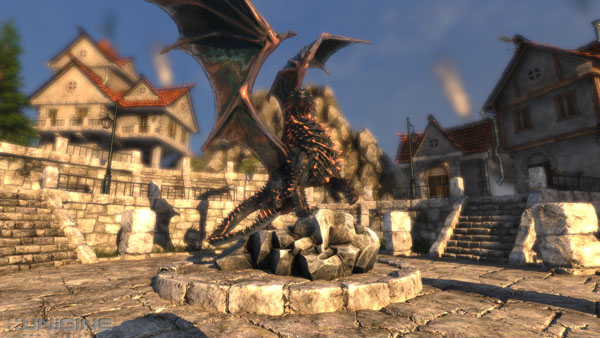
New benchmark grants the power to unleash the DirectX 11 potential in the gift wrapping of impressively towering graphics capabilities. It reveals the enchanting magic of floating islands with a tiny village hidden in the cloudy skies. With the interactive mode emerging experience of exploring the intricate world is ensured within reach. Through its advanced renderer, Unigine is one of the first to set precedence in showcasing the art assets with tessellation, bringing compelling visual finesse, utilizing the technology to the full extend and exhibiting the possibilities of enriching 3D gaming.

The nice increase in clocks help yield a nice performance boost with the 1920 x 1200 overclocked number being similar to the stock clocked less intensive 1680 x 1050 one.
Benchmarks - Resident Evil 5
Resident Evil 5
Version and / or Patch Used: Demo Benchmark
Developer Homepage: www.residentevil.com/
Product Homepage: http://www.residentevil.com/
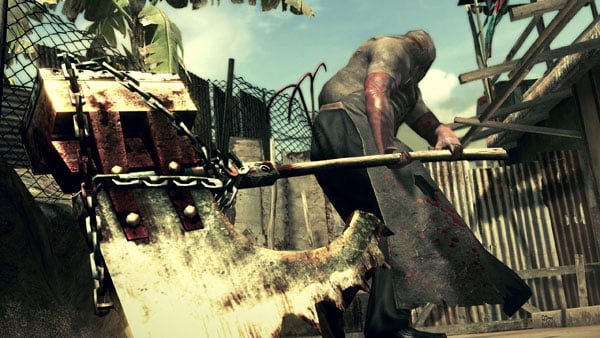
Resident Evil 5 is a survival horror video game developed and published by Capcom. The game is the seventh installment in the Resident Evil survival horror series, and was released on September 18. Resident Evil 5 revolves around Chris Redfield and Sheva Alomar as they investigate a terrorist threat in Kijuju, a fictional town in Africa.

Across the board we see good numbers. At the highest resolution the ECS Black GTX 460 manages to get just over that 60 FPS mark. When overclocked we see it fly past it.
Benchmarks - Tom Clancy's H.A.W.X.
Tom Clancy's H.A.W.X.
Version and / or Patch Used: Benchmark Demo
Timedemo or Level Used: Built-in Test
Developer Homepage: http://www.ubi.com/UK/default.aspx
Product Homepage: http://www.hawxgame.com/
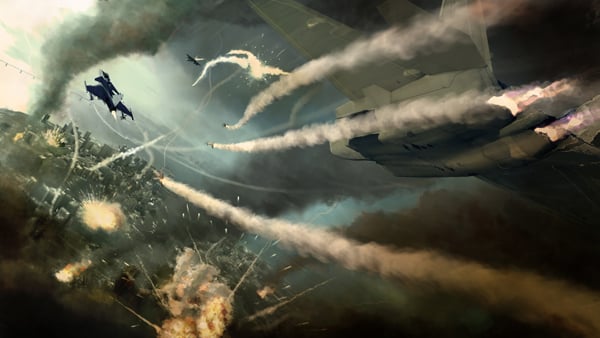
Tom Clancy's H.A.W.X is an arcade-style flight simulator video game developed by Ubisoft Romania and published by Ubisoft for Microsoft Windows, Xbox 360, PlayStation 3, and iPhone OS.
The fundamental gameplay mechanics are similar to those of other console-based flight series. Players take on enemies with over 50 aircraft available. Each mission is at real world locations in environments created with commercial satellite data. A cockpit, first person, and third person view are selectable. The third person view gives the player an external view of both their plane and the target.
Set above the skies of a near-future world, increasingly dependent on private military companies with elite mercenaries who have a relaxed view on the law. As these non-governmental organizations gain power, global conflict erupts with one powerful PMC attacking the United States.

Like RE5 we've got good numbers across the board. At the highest resolution we see the card at 765MHz just scrape in that 60 FPS number. Overclocked we again fly past it helping make sure our game play is extra smooth.
Benchmarks - Mafia II
Mafia II
Version and / or Patch Used: Latest Steam Update
Timedemo or Level Used: Built in Benchmark
Developer Homepage: http://www.2kczech.com/
Product Homepage: http://www.mafia2game.com/
Buy It Here

Mafia II is a third-person action-adventure video game, the sequel to Mafia: The City of Lost Heaven. It is developed by 2K Czech, previously known as Illusion Softworks, and is published by 2K Games. The game is set from 1943 to 1951 in Empire Bay (the name is a reference to New York's state nickname "The Empire State"), a fictional city based on San Francisco and New York City, with influences from Chicago and Detroit. The game features a completely open-ended game map of 10 square miles. No restrictions are included from the start of the game. There are around 50 vehicles in the game, as well as licensed music from the era.

Mafia II is very new and very intensive. We can see even the GTX 460 struggles at the highest resolution and while it does manage to scrape past that 60 FPS number at 1920 x 1200, we can see when overclocked to over 900MHz that 62 FPS is nothing more than a distant memory.
Benchmarks - Lost Planet 2
Lost Planet 2
Version and / or Patch Used: Benchmark Demo
Timedemo or Level Used: Built in Benchmark - Test A Scene 1
Developer Homepage: http://www.capcom.com/
Product Homepage: http://www.lostplanet2game.com/

Lost Planet 2 is a third-person shooter video game developed and published by Capcom. The game is the sequel to Lost Planet: Extreme Condition which is also made by Capcom, taking place ten years after the events of the first game, on the same fictional planet. The story takes place back on E.D.N. III 10 years after the events of the first game. The snow has melted to reveal jungles and more tropical areas that have taken the place of more frozen regions. The plot begins with Mercenaries fighting against Jungle Pirates. After destroying a mine, the Mercenaries continue on to evacuate the area, in which a Category-G Akrid appears and attacks them. After being rescued, they find out their evacuation point (Where the Category-G appeared) was a set-up and no pick up team awaited them. The last words imply possible DLC additions to the game, "There's nothing to be gained by wiping out snow pirates... unless you had some kind of grudge."

With the settings maxed out under Lost Planet 2 you can see at stock we're not able to break the 60 FPS barrier at any resolution. While the same is true when we're at 930MHz, we're extremely close to the number we need at 1680 x 1050, but nothing a small detail drop wouldn't fix.
Benchmarks - Aliens vs. Predator
Aliens vs. Predator
Version and / or Patch Used: Standalone Benchmark
Timedemo or Level Used: Built in Benchmark
Developer Homepage: http://www.rebellion.co.uk/
Product Homepage: http://www.sega.com/games/aliens-vs-predator/
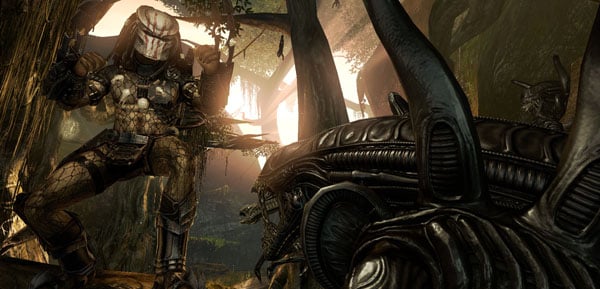
Aliens vs. Predator is a science fiction first-person shooter video game, developed by Rebellion Developments, the team behind the 1999 original PC game, and published by Sega for Microsoft Windows, the PlayStation 3 and the Xbox 360. The game is based on the Alien vs. Predator franchise, a combination of the characters and creatures of the Alien franchise and the Predator franchise. There are three campaigns in the game, one for each race/faction (the Predators, the Aliens and the Colonial Marines), that, while separate in terms of individual plot and gameplay, form one overarching storyline.
Following the storyline of the campaign modes comes the multiplayer aspect of the game. In this Multiplayer section of the game, players face off in various different gametypes in various different ways.

We see a similar picture to our Lost Planet 2 numbers with all scores being below that 60 FPS mark we want. Again at 1680 x 1050 when overclocked we're a lot closer than when at 765MHz. No doubt the detail level would need to be looked at here.
Benchmarks - Final Fantasy XIV
Final Fantasy XIV
Version and / or Patch Used: Standalone Benchmark
Timedemo or Level Used: Built in Benchmark - Elezen (Male)
Developer Homepage: http://www.square-enix.com/
Product Homepage: http://www.finalfantasyxiv.com/
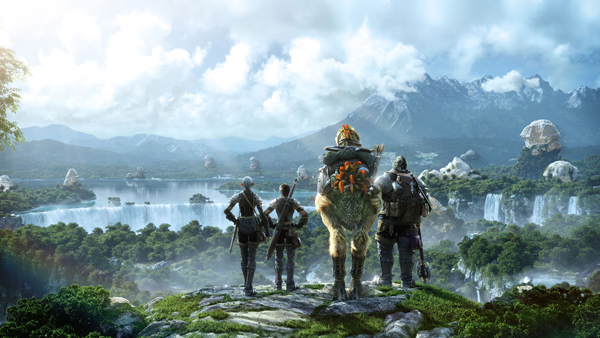
Final Fantasy XIV, also known as Final Fantasy XIV Online, is the fourteenth installment in the Final Fantasy series. The game is a massively multiplayer online role-playing game and is developed and published by Square Enix. The game takes place in a land called Hydaelyn, mainly in a region named Eorzea, which will have a contemporaneously aesthetic blend of science fiction and classic fantasy elements.
The battle and job systems will be different from the one previously used in Final Fantasy XI, which utilized experience points and level-based progression. Final Fantasy XIV is being designed to utilize a skill-based progression[15] system similar to that of Final Fantasy II. Character races will resemble and allow players to create avatars similar to ones in Final Fantasy XI. Group play has been de-emphasized, and now solo and group play have been balanced. Weapon use will alter "character development".

We're not dealing with actual FPS numbers under the Final Fantasy XIV benchmark, but above 2000 seems to be a number we want and really we've got no trouble here playing the game at 1920 x 1080.
Benchmarks - Street Fighter IV
Street Fighter IV
Version and / or Patch Used: Standalone Benchmark
Timedemo or Level Used: Built in Benchmark
Developer Homepage: http://www.capcom.com/
Product Homepage: http://www.streetfighter.com/
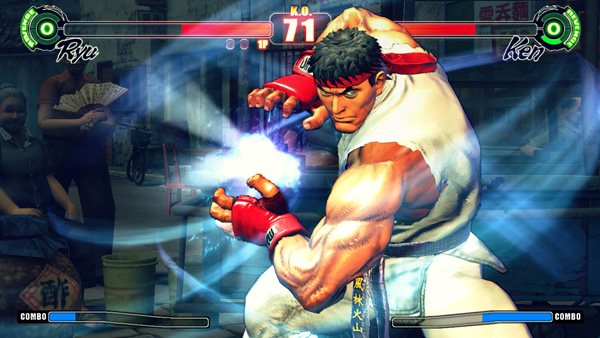
While Street Fighter IV features models and backgrounds rendered in 3D, the gameplay remains on a traditional 2D plane, with the camera having freedom to move in 3D at certain times during fights, for dramatic effect. Producer Yoshinori Ono has stated that he wanted to keep the game closer to Street Fighter II. A new system called "Focus Attacks" ("Saving Attack" for the Japanese version) has been introduced, as well as Ultra moves. The traditional six-button control scheme returns, with new features and special moves integrated into the input system, mixing classic gameplay with additional innovations.
All the characters and environments in Street Fighter IV are rendered as 3D models with polygons, similar to the Street Fighter EX sub-series Capcom produced with Arika. However, there are a couple of key differences. Art director and character designer Daigo Ikeno, who previously worked on Street Fighter III 3rd Strike, opted for non-photorealistic rendering to give them a hand-drawn look, with visual effects accented in calligraphic strokes, ink smudges and ink sprays during the fights.

Street Fighter IV while being quite simple looking, does look very good. With that said, it's not the most strenuous of games and you can see the GTX 460 gives us some fantastic numbers.
Benchmarks - Far Cry 2
Far Cry 2
Version and / or Patch Used: 1.01
Timedemo or Level Used: Ranch Long
Developer Homepage: http://www.ubi.com/
Product Homepage: http://www.farcry2.com/
Buy It Here
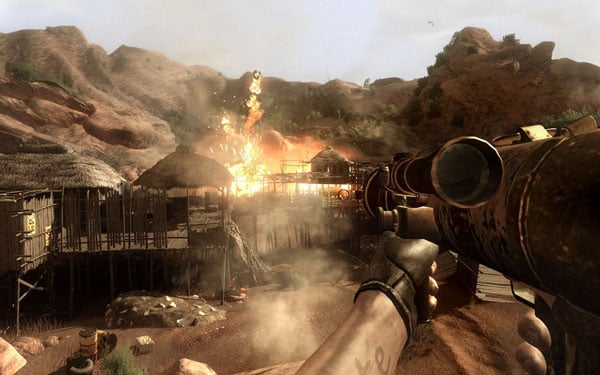
The Dunia Engine was built specifically for Far Cry 2 by the award-winning Ubisoft Montreal development team. It delivers the most realistic destructible environments, amazing special effects such as dynamic fire propagation and storm effects, real-time night-and-day cycle, dynamic music system, non-scripted enemy A.I. and so much more.

At 765MHz we've got the numbers we need even if we're just scraping in over that 30 FPS minimum at the highest resolution. When overclocked, though, we again see that minimum isn't an issue for the ECS Black GTX 460.
Benchmarks - Batman Arkham Asylum
Batman Arkham Asylum
Version and / or Patch Used: 1.1
Timedemo or Level Used: Built-in Test
Developer Homepage: http://www.batmanarkhamasylum.com/
Product Homepage: http://www.batmanarkhamasylum.com/
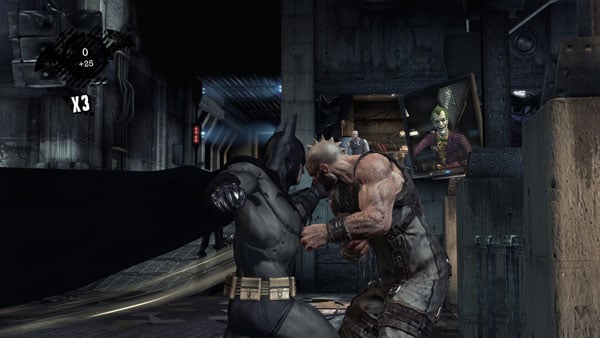
Batman: Arkham Asylum exposes players to a unique, dark and atmospheric adventure that takes them to the depths of Arkham Asylum - Gotham's psychiatric hospital for the criminally insane. Gamers will move in the shadows, instigate fear amongst their enemies and confront The Joker and Gotham City's most notorious villains who have taken over the asylum.
Using a wide range of Batman's gadgets and abilities, players will become the invisible predator and attempt to foil The Joker's demented scheme.
Batman: Arkham Asylum features an original story penned exclusively for the game by famous Batman author and five-time Emmy award winner Paul Dini, whose credits include Lost season one and Batman: The Animated Series.

We're seeing good numbers at all resolutions with the card at stock or overclocked. You're not going to run into any problems here with Batman AA and the ECS Black GTX 460.
Benchmarks - High Quality AA and AF
High Quality AA and AF
Our high quality tests let us separate the men from the boys and the ladies from the girls. If the cards weren't struggling before they will start to now.
Mafia II

While we no doubt see a good increase, you can see that we're struggling to get that 60 FPS average we need; it seems AA is out for the most part when it comes to Mafia 2 and the GTX 460.
Aliens vs. Predator

From a percentage point of view the extra speed on offer from the ECS Black GTX 460 is impressive. Unfortunately we're way below the 60 FPS average we need. Again it seems AA is out in this case.
Street Fighter IV

Fortunately the not as intensive Street Fighter IV doesn't have the same issues as above with some ultra smooth game play with the in-game settings maxed out.
Far Cry 2

While not quite as high as Street Fighter IV, the numbers here are where they need to be and while at 765MHz we're over the 30 FPS minimum, the card at 930MHz just gives us even more breathing room which is something always appreciated.
Benchmarks - PhysX Tests
PhysX Tests
Here we're able to find out when PhysX is turned on in games that support it what kind of frame rates we're able to get. We always set PhysX to the highest possible in game settings while also keeping detail at its highest.
Mafia II

With PhysX on you can see across the board we're not able to hit a 60 FPS average. You're really going to need something higher up under Mafia 2 if you're really interested in PhysX.
Batman Arkham Asylum

Batman AA also struggles at some points. Fortunately it's only at 2560 x 1600; below that we're above the 30 FPS minimum we need to see.
Temperature Test
Temperature Tests

The temperature of the core is pulled from MSI Afterburner with the max reading used after a completed run off 3DMark Vantage and the Performance preset.

The card manages to run very cool which is thanks to that massive cooler. Of course, pumping the voltage to 1.087v and leaving the fan at auto does cause a bit more heat. Still, a very impressive number, though.
Sound Test
Sound Tests

Pulling out the TES 1350A Sound Level Meter we find ourselves quickly yelling into the top of it to see how loud we can be.
After five minutes of that we get a bit more serious and place the device two CM away from the fan on the card to find the maximum noise level of the card when idle (2D mode) and in load (3D mode).

Noise levels on the card are very impressive which is mainly due to the fact that the fans don't spin all that fast.
Power Consumption Tests

Using our new PROVA Power Analyzer WM-01 or "Power Thingy" as it has become quickly known as to our readers, we are now able to find out what kind of power is being used by our test system and the associated graphics cards installed. Keep in mind; it tests the complete system (minus LCD monitor, which is plugged directly into AC wall socket).
There are a few important notes to remember though; while our maximum power is taken in 3DMark06 at the same exact point, we have seen in particular tests the power being drawn as much as 10% more. We test at the exact same stage every time; therefore tests should be very consistent and accurate.
The other thing to remember is that our test system is bare minimum - only a SSD hard drive is used with a single CD ROM and minimal cooling fans.
So while the system might draw 400 watts in our test system, placing it into your own PC with a number of other items, the draw is going to be higher.

Power draw doesn't hold any surprises; there's no reason a good 650 Watt power supply would run into any issues. We wouldn't recommend anything lower than that, only because it's around the 650 Watt mark we see good quality power supplies.
Total Performance Rating (TPR)
Total Performance Rating
The TPR graph is a combination of all our benchmarks in which NVIDIA and ATI are on an even playing field.
The TPR number is a combination of:
3DMark Vantage, Heaven Benchmark V2, Resident Evil 5, Tom Clancy's H.A.W.X., Mafia 2 (PhysX Off), Lost Planet 2, Aliens vs. Predator, Final Fantasy XIV, Street Fighter IV, Far Cry 2, Batman: Arkham Asylum (PhysX Off) and our four High Quality tests which include Mafia 2, Aliens vs. Predator, Street Fighter IV and Far Cry 2.
All of the benchmark results achieved are then combined into a single number. As this graph will grow over time and cards won't be re-tested, next to each model you'll find the driver version that was used when the card was benchmarked.

Because we're starting afresh again with new benchmarks and a few tweaks to the testbed, we've had to throw out all our old TPR results. For the moment it's a little hard to put into perspective exactly where the card sits amongst others. We can tell it does run fast, and that's thanks to the good out of the box overclock ECS is offering us.
Total Value Rating (TVR)
Total Value Rating
The TVR graph is the TPR score divided by the price of the video card. The price of the video card is based on the list price of the model on Newegg.com. In the event the card isn't listed, it will be based on the U.S. $ MSRP given to us by the manufacturer.
In the event we can't source a price from either, the product will not receive a TVR rating. As with our TPR graph, the amount of video cards on the list will grow over time and the price of the model won't change from what it was when first reviewed. For this reason the U.S. $ price that the card is based off will be included next to the name of the model.
In the event you want to find the TVR rating yourself based on the current price, all you have to do is simply divide the TPR number by the list price.
TVR numbers are rounded to the nearest whole number; 100.3 will be 100; 100.8 will be 101 and 100.5 will be rounded down to 100.

Much the same as the TPR results, it's hard to place the card amongst others. At only $229 US, though, it really represents fantastic value in the extremely competitive GTX 460 / $200 market.
Final Thoughts
The main question we need to answer is, has the ECS Black GTX 460 1GB been able to stand out amongst all the other GTX 460s we've already tested? In a word, yes. Two key bits make the Black stand out; the first is that massive cooler that ECS have opted for, it's a cut above the rest when it comes to performance.
The second is the out of the box overclock, which while not being the highest, is higher than most other cards on the market and while they are the two main stand out points for the card, it's got to be said that there's a few other things that help the cause.
The fact that ECS has put a bit of thought into the SLI connector and given us an extra long one is fantastic. It's so often we see companies that utilize these massive coolers but forget about the prospect of running two of them, and sure, while we understand that SLI and CrossFire setups are a small percentage, it doesn't hurt to put a bit of thought into it.
The other thing that stands out is the overclock; the passive cooler really helps achieve a massive overclock while keeping the card cool. That in itself is such a gift for overclockers.
The only negative would be the size of the cooler; it's essentially three slots and to be honest I wouldn't want to place another one in that third slot as it would be right up against the cooler. While no doubt SLI is an option, this card is ultimately for the person who just wants to run a single card and doesn't mind having that said card take up an extra slot than the standard GTX 460.
For the reason above the ECS Black GTX 460 won't be an option for some people. On the other hand, if you don't mind a card that's a little fatter which will cool better than most on the market and offer a greater OC than most, this is the perfect card.
You wrap all these points into a $229 US price tag and you're really onto a winner. While it's hard to point out a "best" GTX 460, the ECS Black probably gives another option to users who are a little more extreme than others, but are still working with in a budget.
Over the last few weeks I've been asked what the best GTX 460 is. While it's impossible to narrow it down to just one, what I can say is that the ECS Black GTX 460 1GB will be getting highly recommended in a short list of GTX 460s that really stand out from the pack.
Massive cooling, an excellent out of the box overclock and a very aggressive price tag ultimately make this one GTX 460 that you need to keep an eye out for, especially if you're interested in doing some overclocking as the TwinTurbo Pro helps keep those core temps right down which is just another bonus amongst a whole list of others.










 United
States: Find other tech and computer products like this
over at
United
States: Find other tech and computer products like this
over at  United
Kingdom: Find other tech and computer products like this
over at
United
Kingdom: Find other tech and computer products like this
over at  Australia:
Find other tech and computer products like this over at
Australia:
Find other tech and computer products like this over at  Canada:
Find other tech and computer products like this over at
Canada:
Find other tech and computer products like this over at  Deutschland:
Finde andere Technik- und Computerprodukte wie dieses auf
Deutschland:
Finde andere Technik- und Computerprodukte wie dieses auf